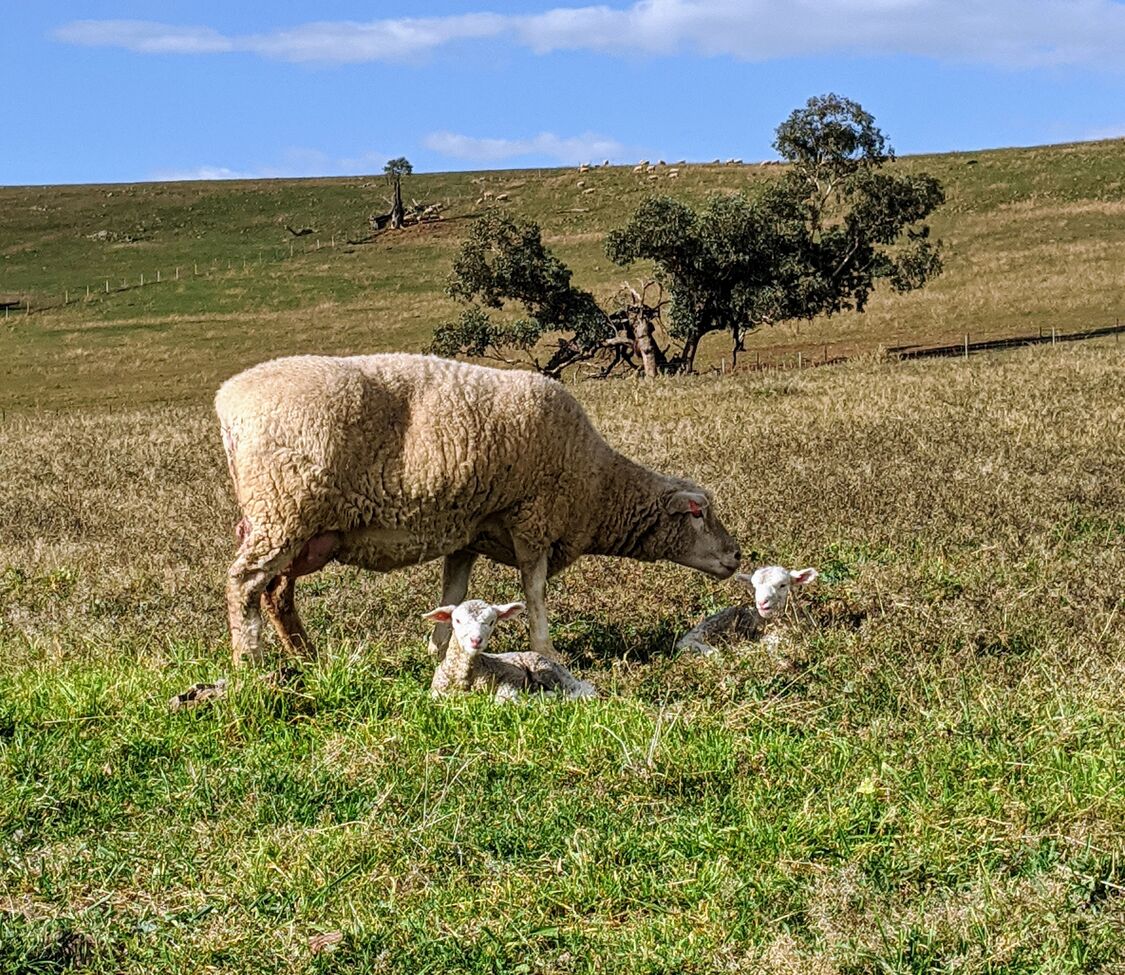HIGH scanning rates are a great measure of potential, according to Bayer Grow’s Rick White.
But managing nutrition through pregnancy to marking is the indicator of the amount of potential you are utilising on-farm.
“The pub talk is generally around what scanning rates are being achieved, with a lot of focus on joining and getting good conception rates, but marking percentage is a bigger indicator of productivity of a flock,” Mr White said.
Mr White, a large animal vet and livestock agronomist, says a focus on managing ewes through pregnancy could have a big impact on lamb survival.
“Now that you have scanning results, what are you going to do with them?”, Mr White asks.
“The biggest impact we can have on lamb survival is improving the birth weight of the lamb, because all data shows low birth weight increases risk of lamb not surviving through to marking.
There is an important loss of production between the number of lambs scanned to the number of lambs marked, Mr White said, with most of the losses occurring in the first week of life.
“Birth weight of the lamb is directly linked to the body condition of the ewe - ewes in better body condition have heavier lambs and therefore better lamb survival,” he said.
“The significance of that is higher for twin bearing ewes and less so for single ewes - single bearing ewes tend to have high birth weight and survival anyway, but twin lambs tend to be smaller.
“So the focus should very much be on twin bearing ewes having good body condition approaching lambing.
“Twin bearing ewes have much higher energy requirements and therefore need to get preferential access to feed or higher feed rations.”
Mr White said the sooner you act after scanning, the more time you have to ensure ewes lamb down at the target body score condition.
“We should be targeting a 3 score body condition or better for twins, but you can’t change body condition overnight,” he said.
“If they need to gain more than half a score on, that is going to take longer than 30 days.
“But it is easy for single ewes to have too good of body condition, which reduces lamb survival in that group.
“You can’t run them in one group as you will be overfeeding singles and overfeeding twins - and if you aren’t scanning for multiplies it is impossible to meet the different requirements of the different groups.
“The whole idea of scanning isn't to just predict how many lambs you are going to mark but to manage different groups appropriately to maximise lamb survival.”
Mr White said the other thing producers should consider during lambing time was the supplementary feeding procedure.
“If you have to supplementary feed ewes through lambing, if pastures are not going to meet requirements, it is important to establish the feeding process and behaviour of ewes before lambing starts,” he said.
“Switching feeding methods shouldn’t be done right on the point of lambing - you see disasters if people make a big switch suddenly in the middle of lambing because you upset the behaviour of ewes and cause mis-mothering.
“Have your feeding schedule in place two to three weeks before lambing starts and stick to whatever system you are using.”
Appropriately assessing body condition and pasture availability is crucial to carrying out the right management of lambing ewes, Mr White said, and recommended the Lifetime Ewe Management Course (LTEM)
The LTEM training program was developed by Australia Wool Innovation and Rural Industry Skills Training, and has been delivered to more than 4000 sheep producers across the country.
“I support producers attending a LTEM course if they haven't done so...it teaches good skills in body condition scoring and different requirements of ewe groups, as well as assessing pasture, what different types of pasture provide and what gaps need to be filled with supplementary feeding,”Mr White said.
“I do find crossbred and British breed producers can be dismissive of LTEM because it does have a Merino focus, but people can still learn a lot of skills and can adapt them to their programs.”
